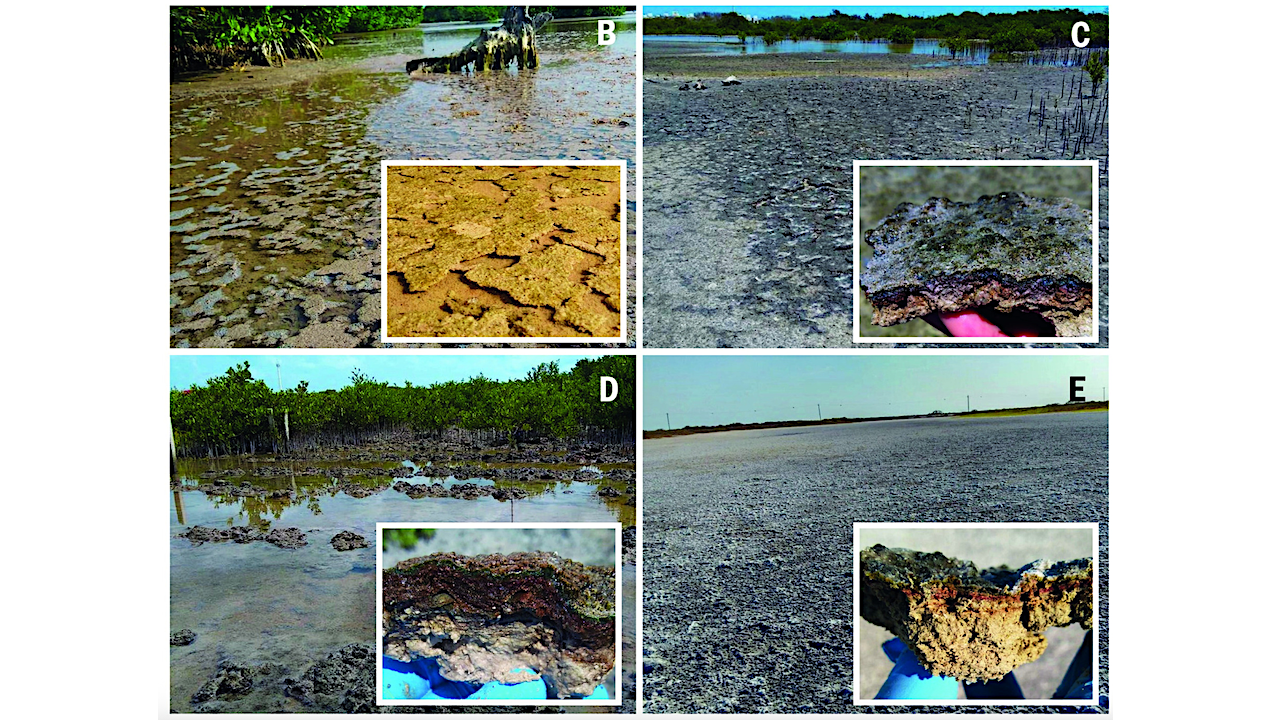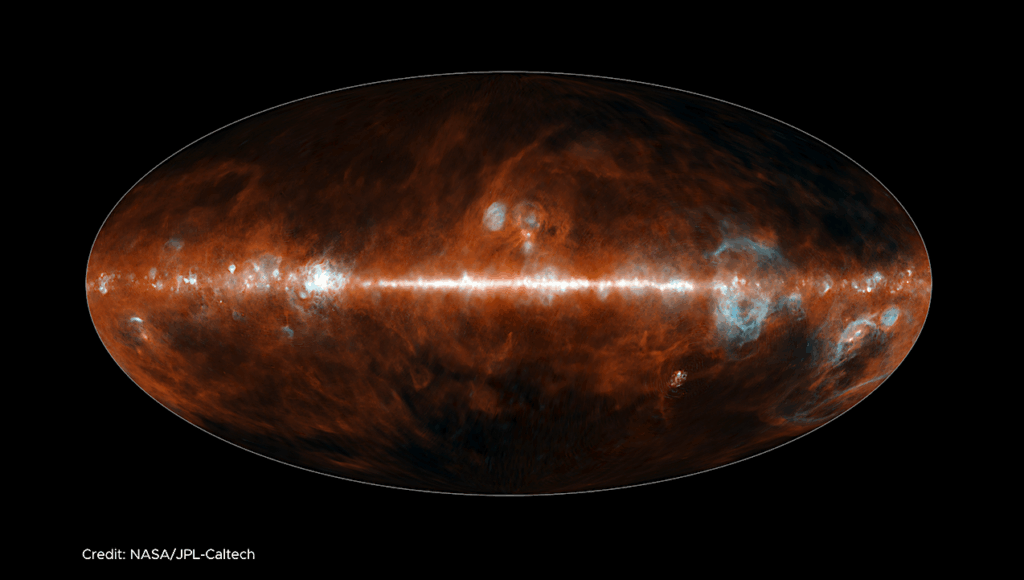Now Reading: Microbial Diversity Of Coastal Microbial Mats Formations In Karstic Habitats From The Yucatan Peninsula, Mexico
-
01
Microbial Diversity Of Coastal Microbial Mats Formations In Karstic Habitats From The Yucatan Peninsula, Mexico
Microbial Diversity Of Coastal Microbial Mats Formations In Karstic Habitats From The Yucatan Peninsula, Mexico


Different types of coastal microbial mats were documented: Lift-off mats from Sisal (B), Pustular (C) and flat (D) microbial mats from Progreso, and flat mats from Ría Lagartos (E). — PLoSONE via PubMed
In this study, we report for the first time an exploration of the physicochemical characteristics and the prokaryotic diversity of three different types of microbial mats from karstic habitats located in Sisal, Progreso and Ría Lagartos, in the Yucatan Peninsula, Mexico.
Our results showed that lift-off mats were found in the lower salinity (2.2%) area (Sisal), while flat and pustular mats were detected in hypersaline (6-9%) sites (Progreso and Ría Lagartos). Notably, some of these microbial mat structures were in close proximity to mangrove forest ecosystems with both degraded and restored regimes. XRD analysis revealed different mineral compositions of the mats; however, aragonite, calcite, and halite were commonly found in all samples studied.
High-throughput sequencing of the 16S rRNA gene identified differences in microbial communities across the different mat types, and statistical analyses revealed that salinity, redox potential, and temperature were significant factors in explaining the variance of the prokaryotic assemblages. Microbial groups identified in this study include those known to be important in the biogeochemical cycling of key elements, such as carbon, nitrogen, and sulfur.
Interestingly, the community composition of flat and pustular mats from Progreso was similar, with Bacteroidia, Anaerolineae, and Phycisphaerae being the most abundant microbial groups in flat mats; and Bacteroidia, Anaerolineae, and Alphaproteobacteria dominating pustular mats. By contrast, flat mats from Ría Lagartos were dominated by Halobacteria, Cyanobacteria and Bacteroidota, while Bacteroidia, Gammaproteobacteria and Cyanobacteria dominated lift-off mats from Sisal.
This work contributes to understanding the distribution, physicochemical characteristics and microbial diversity of coastal microbial mats, providing valuable new insights into microbial mats that develop in karstic ecosystems. This information is relevant to ongoing and future efforts to manage and preserve coastal ecosystems in the Yucatan Peninsula.

Map showing sampling sites (A). Source: INEGI, Digital Topographic Map, 2024, México (https://gaia.inegi.org.mx/mdm6). The original maps were modified to show the study sites. Map modifications comply with terms of use required by INEGI for free distribution (https://www.inegi.org.mx/contenidos/inegi/doc/terminos_info.pdf).
Microbial diversity of coastal microbial mats formations in karstic habitats from the Yucatan Peninsula, Mexico, PLoSOne via PubMed (open access)
Astrobiology,
Stay Informed With the Latest & Most Important News
Previous Post
Next Post
Previous Post
Next Post
-
 01From Polymerization-Enabled Folding and Assembly to Chemical Evolution: Key Processes for Emergence of Functional Polymers in the Origin of Life
01From Polymerization-Enabled Folding and Assembly to Chemical Evolution: Key Processes for Emergence of Functional Polymers in the Origin of Life -
 02Panasonic Leica Summilux DG 15mm f/1.7 ASPH review
02Panasonic Leica Summilux DG 15mm f/1.7 ASPH review -
 03How New NASA, India Earth Satellite NISAR Will See Earth
03How New NASA, India Earth Satellite NISAR Will See Earth -
 04And Thus Begins A New Year For Life On Earth
04And Thus Begins A New Year For Life On Earth -
 05Astronomy Activation Ambassadors: A New Era
05Astronomy Activation Ambassadors: A New Era -
06SpaceX launch surge helps set new global launch record in 2024
-
 07Two Black Holes Observed Circling Each Other for the First Time
07Two Black Holes Observed Circling Each Other for the First Time




















